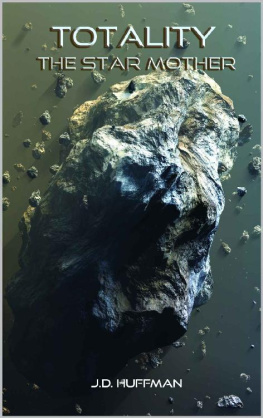Shannon Huffman Polson - The Grit Factor
Here you can read online Shannon Huffman Polson - The Grit Factor full text of the book (entire story) in english for free. Download pdf and epub, get meaning, cover and reviews about this ebook. year: 2020, publisher: Harvard Business Review Press, genre: Home and family. Description of the work, (preface) as well as reviews are available. Best literature library LitArk.com created for fans of good reading and offers a wide selection of genres:
Romance novel
Science fiction
Adventure
Detective
Science
History
Home and family
Prose
Art
Politics
Computer
Non-fiction
Religion
Business
Children
Humor
Choose a favorite category and find really read worthwhile books. Enjoy immersion in the world of imagination, feel the emotions of the characters or learn something new for yourself, make an fascinating discovery.

- Book:The Grit Factor
- Author:
- Publisher:Harvard Business Review Press
- Genre:
- Year:2020
- Rating:4 / 5
- Favourites:Add to favourites
- Your mark:
- 80
- 1
- 2
- 3
- 4
- 5
The Grit Factor: summary, description and annotation
We offer to read an annotation, description, summary or preface (depends on what the author of the book "The Grit Factor" wrote himself). If you haven't found the necessary information about the book — write in the comments, we will try to find it.
The Grit Factor — read online for free the complete book (whole text) full work
Below is the text of the book, divided by pages. System saving the place of the last page read, allows you to conveniently read the book "The Grit Factor" online for free, without having to search again every time where you left off. Put a bookmark, and you can go to the page where you finished reading at any time.
Font size:
Interval:
Bookmark:
THE GRIT FACTOR
THE GRIT FACTOR
COURAGE, RESILIENCE & LEADERSHIP IN THE MOST MALE-DOMINATED ORGANIZATION IN THE WORLD
SHANNON HUFFMAN POLSON
Hardvard Business Review Press
Boston, Massachusetts
HBR Press Quantity Sales Discounts
Harvard Business Review Press titles are available at significant quantity discounts when purchased in bulk for client gifts, sales promotions, and premiums. Special editions, including books with corporate logos, customized covers, and letters from the company or CEO printed in the front matter, as well as excerpts of existing books, can also be created in large quantities for special needs.
For details and discount information for both print and ebook formats, contact .
Copyright 2020 Shannon Huffman Polson
All rights reserved
Printed in the United States of America
10 9 8 7 6 5 4 3 2 1
No part of this publication may be reproduced, stored in or introduced into a retrieval system, or transmitted, in any form, or by any means (electronic, mechanical, photocopying, recording, or otherwise), without the prior permission of the publisher. Requests for permission should be directed to , or mailed to Permissions, Harvard Business School Publishing, 60 Harvard Way, Boston, Massachusetts 02163.
The web addresses referenced in this book were live and correct at the time of the books publication but may be subject to change.
Library of Congress Cataloging-in-Publication Data
Names: Polson, Shannon Huffman, author.
Title: The grit factor : courage, resilience, and leadership in the most male-dominated organization in the world / Shannon Huffman Polson.
Description: Boston, MA : Harvard Business Review Press, 2020. | Includes index.
Identifiers: LCCN 2020010267 (print) | LCCN 2020010268 (ebook) | ISBN 9781633697263 (hardcover) | ISBN 9781633697270 (ebook)
Subjects: LCSH: Resilience (Personality trait) | Toughness (Personality trait) | Command of troops. | Leadership. | Sex discrimination against women. | United StatesArmed ForcesWomen.
Classification: LCC BF698.35.R47 P65 2020 (print) | LCC BF698.35.R47 (ebook) | DDC 158.1dc23
LC record available at https://lccn.loc.gov/2020010267
LC ebook record available at https://lccn.loc.gov/2020010268
ISBN: 978-1-63369-726-3
eISBN: 978-1-63369-727-0
The paper used in this publication meets the requirements of the American National Standard for Permanence of Paper for Publications and Documents in Libraries and Archives Z39.48-1992.
Dedicated to the memory of Dougald and Tori MacMillan, who gave me a home as a young lieutenant at Fort Bragg.
For Peter, Sam, and Jude, who have my heart.
For all the new, transitioning, and developing leaders moving into their own new experiences, willing, despite the resistance, to face into the wind.
Contents
THE GRIT FACTOR
Introduction
Plotting a Course for Grit
A s I walk onto the flight line, the night sky is moonless, the darkness deep and menacing. I am walking with my backseater, the pilot who flies behind me in the tandem glass cockpit of our Apache, the worlds most sophisticated attack helicopter. Each of our battalions twenty-four Apaches crouches in its own fortified space, bounded by walls four feet tall and two feet thick, constructed of large stones held in place by chicken wire. These barriers will contain an explosion if a grenade is lobbed over the perimeter, limiting the damage. Two rows of fencing topped with barbed concertina wire define the perimeter of the flight line. This late at night, the Apaches are visible only as hulking shapes of latent energy. All are armed with Hellfire antitank missiles and 30 mm high-explosive rounds.
With each step, our eyes adjust to the darkness. We walk around the helicopter for one last check before climbing in to launch. We begin the run-up procedure, and I hear the rotor blades cut into the thick darkness and begin churning the air in a rhythmic thump thump.
I pull pitch, pulling up the lever of the collective that changes the angle of all four rotor blades simultaneously, and I feel a momentary lightness as our aircraft lifts into the air and we transition to forward flight. We move into the night, dark sky above shadowy ground, everything dark except for the green picture I see through the infrared monocle over my right eye. The infrared picture is clear and crisp, showing that the landscape is still holding the heat of Bosnias Adriatic sun from just hours before. I call in to the tower to report departure, and fly us to the checkpoint just to the north of the airfield, a route we know now by heart.
You have the controls, I say to my backseater.
I have the controls, he confirms.
You have the controls, I say again, all part of carefully scripted communications procedures.
Our communication is aural only. The positioning of our seats does not permit a questioning glance. Now Im in charge of navigation. I open the large, folded map on my knee, and use my lips to turn on the tiny green light attached to my microphone. Under minimal illumination, I check and tune the radios for the next frequencies we will need, and confirm the waypoints I have programmed against the pencil line Ive drawn along our route. I do all of this in less than a minute, actions carried out with little effort, a product of repeated drilling throughout training. As we fly north along our route, I check in with the ground units were flying over in Multinational Division North, units from various NATO countries. The objective isnt far tonight. We begin to slow as we approach the area where we will perform an armed aerial reconnaissance of a Serbian heavy-weapon storage site.
Then, at that moment, in that night, in the midst of the radio calls coming from ground forces and from the air-traffic-controlling agency, the sound in my helmet changes.
Radar... tracking... the electronic voice says.
My backseater and I know immediately what the voice indicates. I feel my heart in my throat. Were being tracked by the most lethal antiaircraft system in the world.
What do you want me to do LT? my backseater asks. Do you want me to break the hard deck?
We had been briefed on our arrival into this country that the rules of engagement specified a minimum flight altitude, or hard deck, of three hundred feet, much higher than we are comfortable flying tactically because of the susceptibility to surface fire or antiaircraft weapons. Lower-altitude flying permits us to mask our movements and thus avoid enemy contact. The minimum altitude is meant to support the next operational phase of postwar Bosnia, the resettlement of the Muslim community previously forced out of homes and neighborhoods, by reducing the disruption to the civilian population.
Ill call it in, I say, quickly tuning the VHF radio to reach the air-controlling agency.
I key the mike.
This is Blue Max Five-Six. Were at position Alpha at three hundred feet, and were getting a tracking signal from hostile radar, I report.
In the few seconds of waiting for the reply, the sound in my headset changes.
Radar... acquisition... comes the computerized voice.
Just then the voice at the controlling agency crackles back on the frequency.
If youre nervous, return to base, the voice on the other end says. But dont break the hard deck.
Nervous? Heck yes, we were nervous. I had a decision to make in that few seconds, a decision that had to take into account layers of information: Our threat briefs indicated a lowered threat level. No aircraft had been targeted in recent months. Provocation was more likely than engagement. Engagement would result in an international incident. In that instant, I had to make a choice not to allow myself to be paralyzed by fear, and instead to use the judgment developed by years of training to make a quick yet measured response.
Next pageFont size:
Interval:
Bookmark:
Similar books «The Grit Factor»
Look at similar books to The Grit Factor. We have selected literature similar in name and meaning in the hope of providing readers with more options to find new, interesting, not yet read works.
Discussion, reviews of the book The Grit Factor and just readers' own opinions. Leave your comments, write what you think about the work, its meaning or the main characters. Specify what exactly you liked and what you didn't like, and why you think so.











